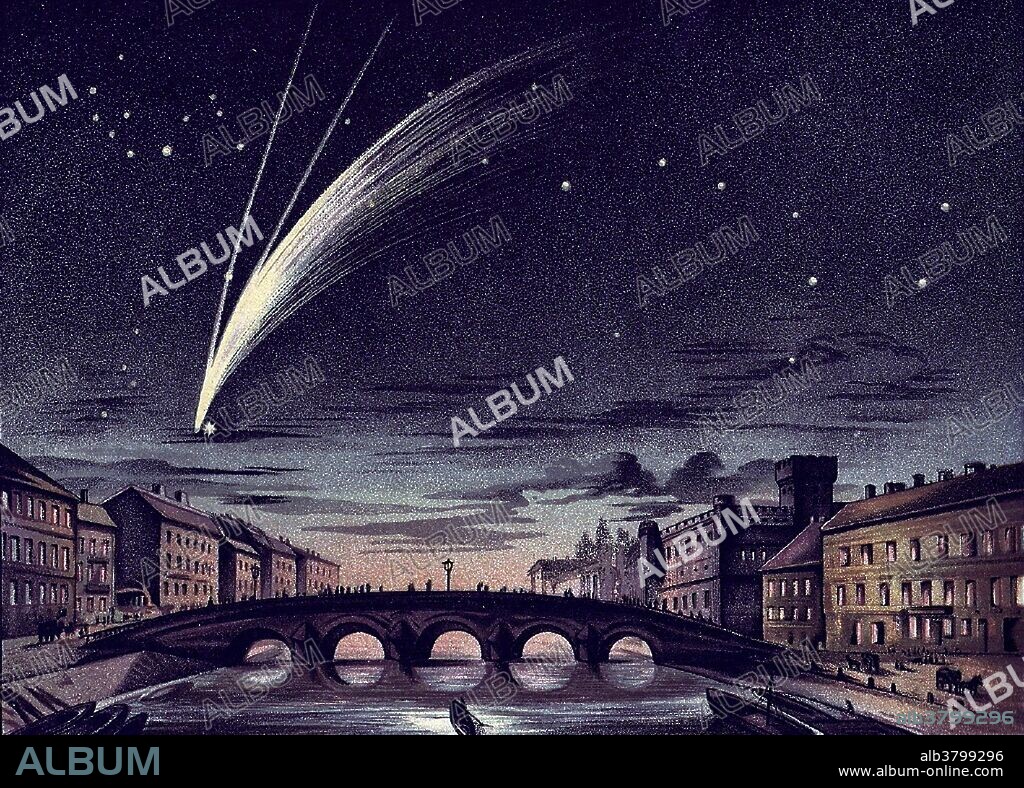alb3799296
Comet Donati, 1858

|
Añadir a otro lightbox |
|
Añadir a otro lightbox |



¿Ya tienes cuenta? Iniciar sesión
¿No tienes cuenta? Regístrate
Compra esta imagen

Título:
Comet Donati, 1858
Descripción:
Ver traducción automática
Comet Donati, or Donati's Comet, formally designated C/1858 L1 and 1858 VI, is a long-period comet named after the Italian astronomer Giovanni Battista Donati who first observed it on June 2, 1858. After the Great Comet of 1811, it was the most brilliant comet that appeared in the 19th century. It was also the first comet to be photographed. It was nearest the Earth on October 10, 1858. A comet is an icy small Solar System body that, when passing close to the Sun, heats up and begins to outgas, displaying a visible atmosphere or coma, and sometimes also a tail. These phenomena are due to the effects of solar radiation and the solar wind upon the nucleus of the comet. Comets have been observed and recorded since ancient times by many different cultures. Comets have a wide range of orbital periods, ranging from several years to several millions of years. Image appeared in Bildatlas der Sternenwelt (Picture Atlas of the World Star), 1888.
Crédito:
Album / Science Source
Autorizaciones:
Modelo: No - Propiedad: No
¿Preguntas relacionadas con los derechos?
¿Preguntas relacionadas con los derechos?
Tamaño imagen:
4200 x 3015 px | 36.2 MB
Tamaño impresión:
35.6 x 25.5 cm | 14.0 x 10.1 in (300 dpi)
Palabras clave:
1858 • ARTE • ASTRONOMIA • ASTRONÓMICO • CIENCIA • COMETA (ARTEFACTO VOLADOR) • COMETA • CUERPO CELESTE • DIBUJO • FENÓMENOS • HISTORIA • HISTORICO • ILUSTRACION • OBJETO CELESTE • OBRA DE ARTE • SIGLO XIX
 Pinterest
Pinterest Twitter
Twitter Facebook
Facebook Copiar enlace
Copiar enlace Email
Email
